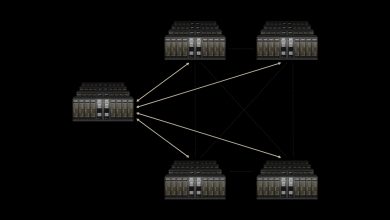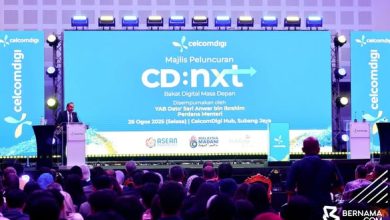Data Centres Are Not Just Power Hungry, They’re Thirsty Too
In the Race to Build Data Centres, We Might Be Overlooking Their Many Needs

When we talk about data centres, the conversation often revolves around their insatiable appetite for power. These digital giants devour massive amounts of electricity just to stay up and running. But while we’re fixated on their power consumption, there’s another, equally troubling problem that slips under the radar: water consumption.
Unlike electricity, we can’t simply generate water on demand. Yet these sprawling complexes, with their endless rows of servers and blinking lights, consume huge amounts of it every day. But why do data centres, with all their high-tech equipment, need so much water? The answer lies in cooling. Much like how industrial machines or engines overheat during prolonged operation, data centres generate enormous amounts of heat due to the continuous operation of millions of servers. To protect them from overheating and ensure smooth performance, large quantities of water are essential to maintain optimal temperatures.
To put this in perspective, a 100 MW data centre can guzzle around 1.1 million gallons (roughly around 4.2 million litres) of water every day. That’s enough to support a small city of 10,000 people.
Plus, most data centres aren’t sitting in places where water is in abundance.
The U.S. leads the world in data centres, with over 5,300 facilities but nearly 20% of them are located in regions already suffering from droughts. That’s millions of litres of water being pulled from areas that, well, don’t really have enough to begin with. It’s a ticking time bomb for local communities, and it’s not even on most people’s radar.
And it’s not just direct water use we’re talking about. The double-whammy of direct and indirect water use is staggering.
Data centres are also indirectly responsible for huge amounts of water consumption through the electricity they need. It can take up to 45 litres of water for every kilowatt-hour (kWh) of power generated by fossil fuels (i.e. coal-fired power plants). So, not only are data centres using water to cool their servers, but they’re also using water to keep the lights on.
Malaysia’s Data Centre Heats Up in Numbers But Drying Up Its Resources
Let’s shift our gaze to somewhere closer, Malaysia. The country is quickly becoming a regional data centre hub, attracting billions in investments from Microsoft, Google, and AWS, just to name some of the big guns.
It all seems great on paper but logically and environmentally speaking, it comes with serious baggage.
About ten years from now (by 2035), Malaysia’s data centres are expected to consume more than 5,000 MW of electricity, as per Tenaga Nasional Berhad (TNB) with some projections going as high as 11,000 MW – that’s over 40% of the country’s current power capacity!
This is all without even painting AI to the picture. Based on the latest data centre report from Arizton, forecasted from 2024 to 2029, Malaysia will scale towards having the largest processing and output capacity for data centres in Southeast Asia, powered via the rise in demand for AI, data management, and cybersecurity.
With that in mind, there is some possibility that one day, the amount of water that Malaysia’s data centres use could reach the State’s numbers.
To add, with the country already facing potential water shortages due to climate change and ageing infrastructure, this massive demand for water could spell disaster.
And yet, the conversation around water consumption remains dangerously muted.
The Search for Smarter Solutions
But all hope is not lost. Technological innovation, once again, might save the day.
Jimmy Yam, Vice President and General Manager of East Asia for Eaton Electrical first wants to change our perspective. Our main aim should not primarily just be about saving water but in fact, we must first put emphasis on future-proofing data centres, especially in an increasingly water-stressed world. He’s not denying nor saying that we should not use water cooling (or some would know it as liquid cooling) to cool down our data centres.

In fact, in an article I wrote not too long ago, a collaborative effort between the National University of Singapore (NUS), Nanyang Technological University (NTU), Singapore’s national research agencies, and leading IT companies, has resulted in the launch of the world’s first data centre testbed specifically designed for tropical climates – the Sustainable Tropical Data Centre Testbed (STDCT).
The data centre is testing two commonly used technologies with the aim of developing more efficient and sustainable cooling solutions with one of them still using some sort of water/liquid cooling solution known as the StatePointiquid Cooling (SPLC). So, water is still needed, reliable and useable but it depends on how we use it.
Thus, Jimmy suggests that rather than using clean water, he advocates for the use of recycled rainwater and/or greywater in the cooling systems, which he said, can help reduce the strain on potable water supplies. Plus, he adds, that yes, while it’s doable, it all comes down to how smart the design is.
For instance, optimising airflow, tweaking cooling tower flow rates, and using modular/direct-to-chip liquid cooling systems can go a long way toward reducing the overall environmental impact of data centres.

Christophe Maisonnave, Cloud Services Director at HPE, also sees eye to eye with Jimmy on how smarter designs can help in minimising water usage all while not sacrificing any sort of performance. Christophe also highlighted that some data centres are now using renewable energy and waste-heat recovery to drive down their environmental footprint. His example given is on QScale’s QO1 data centre in Quebec, Canada, where they host their supercomputing and AI workloads, which run on almost 100% renewable energy with advanced liquid cooling and waste-heat recovery. HPE also recently unveiled a new partnership with Danfoss to curb data centre energy consumption and reuse waste heat using modular data centres and integrated heat capture systems for external reuse.
And let’s not forget about flash storage. Matthew Oostveen Vice-President and Chief Technology Officer, Asia Pacific & Japan for Pure Storage explains that moving to flash-based infrastructure can reduce water and energy requirements by 80-85%. It’s all about efficiency – less water, less power, and better performance.

“Our flash-optimised systems consume 2-5x less power than SSD-based systems, and 5-10x less than HDDs. This empowers operators to reduce their energy usage and carbon emissions by up to 85%. Aside from power savings, these arrays significantly lower cooling needs, requiring 80-85% less water and occupying up to 95% less rack space in data centres, compared to spinning disks,” he said.
There are also other ways that data centres are being cooled, especially in tropical areas or those that are deprived of water resources, with tech such as AI-powered smart monitoring, liquid immersion cooling and even geothermal cooling, which all I have discussed in this article.
So, the options are already there, but are we willing to invest in them?
Drowning in Lack of Water
So, where does this leave Malaysia? As Weng-Yew Wong, Founder and Managing Director of Open DC, notes, Malaysia is still lacking the necessary policies to manage the rapid growth of data centres and their impact on water supplies. While Singapore and the EU have already laid out their Green Data Centre Roadmap and Climate Neutral Data Centre Pact (CNDCP), Malaysia is thousands of milestones behind. If the country doesn’t move quickly to implement similar measures, it risks facing severe water shortages in the near future. The clock is ticking.

The future of data centres depends on our ability to balance their need for cooling with the planet’s dwindling water resources. Water-efficient technologies are all steps in the right direction but without the right policies and infrastructure in place, we’re setting ourselves up for a serious water crisis.
Data centres are here to stay but their thirst for water is a silent crisis that’s slowly bubbling to the surface. The challenge ahead is not only to quench the thirst of these digital giants, but to weave sustainability into the very fabric of their existence, before their quiet crisis escalates into a full-blown catastrophe.




